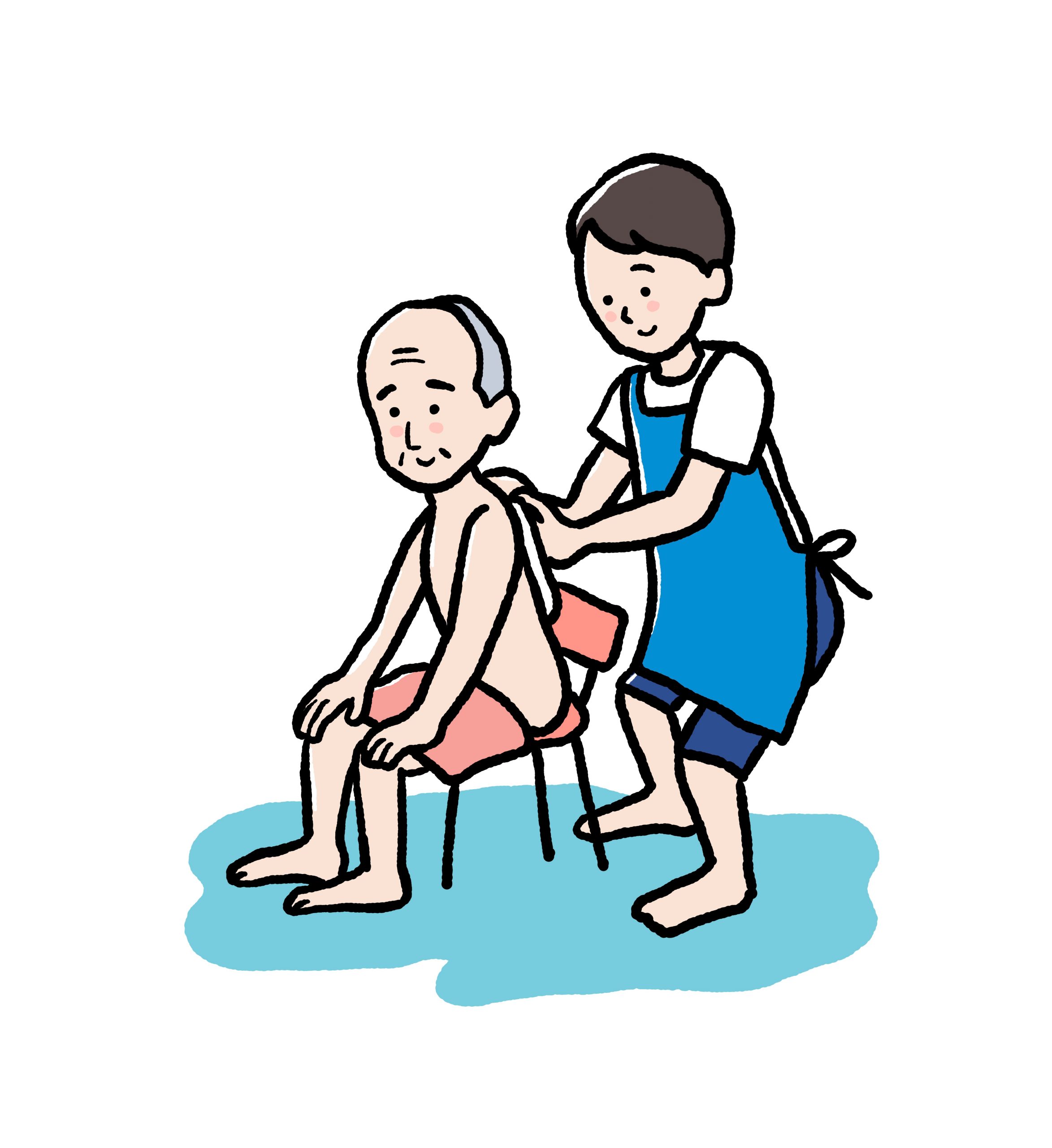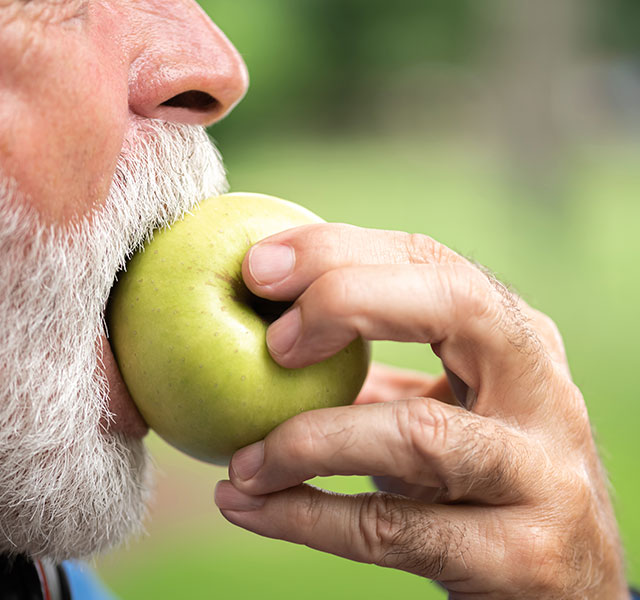This is the third of three blogs about dementia and bathing. You’ll find part 1 here, and part 2 here.
People with dementia may not be able to tell you why they don’t want to bathe. But the more you can identify with their experience, the more likely you are to discern the reason and help them cope.
Here are some possibilities.
Modesty is often involved. Aside from our spouses, most of us balk at being naked in front of others—even family members. You can protect the person’s modesty by draping a towel over their shoulders and another across their lap. Simply wash under the towels.
Fear in many forms is a big factor.
Age, combined with brain changes caused by dementia, can lead to instability and a fear of falling. Acknowledge this and reassure your loved one that you have made bathing safe by installing grab bars and providing a shower chair. For a tub, get a transfer bench to eliminate the need to step over the side.
Because their world can feel unsafe and unpredictable, no one with dementia likes to be surprised. Tell your loved one what you are doing at every step and invite their participation or at least acceptance.
On the other hand, if your gut tells you that focusing on the details makes your loved one more anxious, then distraction may be the answer. Marcy cares for her sister, who has dementia. They are both musicians, so when her sister began to rebel in the shower, Marcy started singing. Her sister forgot she was in the hated shower and lustily joined in.
But what distracts once may not work every time—or ever again. Thus, be prepared to respond to distress in a way that acknowledges it. Stop and ask your loved one what’s wrong. Fix it if you can. Be vigilant for what frightens them or causes them pain. If you value the person more than the task and make what changes you can, there’s a good chance you’ll succeed with traditional bathing.
But what if none of this works and they continue to resist? Perhaps their aversion to water or fear of falling is too great to overcome—or they resist for some other reason you can’t fathom. What then?
Most important, do not bathe anyone against their will!
They will feel like they’re being attacked. It’s not true that it doesn’t matter because they will forget about it. They can remain upset for hours, and it will have a lasting effect on how safe they feel.
Luckily, there are alternatives to the tub or shower. But to adopt one or another of them may require you to give up some long-held beliefs.
If you grew up with a grandmother like mine, whose favorite maxim was, “Cleanliness is next to godliness,” chances are you’re sure that getting clean requires lots of soap and water.
Not so. “Use less,” write Ann Louise Barrick and Joanne Rader in their book, Bathing Without a Battle: Person-Directed Care of Individuals with Dementia (2008).
Another advocate of a less-is-more ethic is Sandy Skotnicki, MD, professor of dermatology at the University of Toronto and practicing dermatologist, who specializes in skin reactions.
Skotnicki, author with Christopher Shulgan of Beyond Soap: The Real Truth about What You Are Doing to Your Skin and How to Fix It for a Beautiful, Healthy Glow (2018), says that good, old fashioned soap, whose active ingredient is lye, is no friend to your skin’s natural oils. It can leave skin dry and more susceptible to infection.
She recommends using a syndet—short for synthetic detergent—bar instead. Familiar brands are Dove, Aveeno and Cetaphil.
Also outmoded is the idea that you must wash head to toe every single day. Showering two or three times a week is plenty and once a week will suffice.
The most familiar alternative to shower or tub bathing is a sponge bath. For centuries, bedbound people have been successfully bathed this way. And before we had running water, most people sponge-bathed with a basin, soap and water. (Because sponges can harbor bacteria, using a washcloth is better.)
Basin baths are a good, relatively stress-free way to wash someone with dementia. Barrick and Rader recommend making it even easier by using no-rinse products. Some caregivers balk at that idea, but keep in mind that you probably have already used them in the form of baby wipes. If you worry about the product remaining on the skin, you can always wipe afterwards with a wet cloth.
Your loved one may be able to do some of the washing during a sponge bath with your guidance.
Basin baths can be done while the person is in bed, standing at the sink or even sitting in a chair that is protected with a waterproof cover. Dry each body area as soon as it is rinsed, and you’ll avoid chilling the person.
If you need to clean your loved one following an episode of bowel incontinence, it’s especially handy to bathe them while they sit on the toilet.
For those who resist even sponge baths, Barrick and Rader suggest a bathing option that caregivers I know have used and praise: the Seven-Day Bath. Even a very resistant person will usually agree to allow you to wash one body part a day. Divide the body up so that at the end of seven days you’ve accomplished a full bath. Then start again at the beginning.
Hair washing is the most distressing part of bathing for many people who live with dementia. Having water—and especially soapy water—pouring down on their head and face when they aren’t in control is frightening.
There are three better options.
Most obvious and easiest: the beauty-parlor option. Some women are accustomed to being shampooed at a beauty parlor and look forward to it. It is familiar, enhances their appearance and provides a chance to socialize. Keep it up as long as you can.
Washcloth method: this can be done anywhere that’s comfortable as long as you cover the person with a couple of towels. Wet a washcloth. Add a very small amount of shampoo. Rub the person’s hair with the cloth. “Rinse” by wiping the hair repeatedly with a clean, moist cloth–never soaking wet. You want the person to trust that water isn’t going to get onto their face.
No-rinse shampoo method: you can buy no-rinse shampoo and use the washcloth method. Also available is a disposable shower cap preloaded with no-rinse shampoo. Warm it in the microwave and then put it on the person’s head. Massage for two-to-three minutes and remove. If you like, rinse afterwards with a damp washcloth.
If at any point you, the caregiver, feel you can’t attempt one more shower or shampoo, call a home care agency. They often have aides who have a special knack for jollying people into a shower. One caregiver told me he sat outside the bathroom, flabbergasted at the giggles going on as the “shower lady” gave his wife the thorough shower he couldn’t pull off.
Don’t let a battle over bathing continue! It has too many detrimental effects. They will show up in the person’s behavior, their willingness to cooperate and their sense of well-being.
And in your own well-being, as the exhausted family caregiver. The battle can wear you down and hasten the decision to relinquish your loved one to a memory-care home.
Before things get to that stage, try washing less often, with less soap and only in the important places. Less in this case means more peace for all.
Maggie Sullivan has come to know Alzheimer’s intimately. She was caregiver and advocate during the eight years her mother lived with the disease. For the past 30 years, she has facilitated caregiver support groups for the Alzheimer’s Association, learning from the experience of more than 300 members of those groups. The opinions she expresses here are her own. Maggie is also a writer whose essays and articles have appeared in the New York Times and elsewhere.



